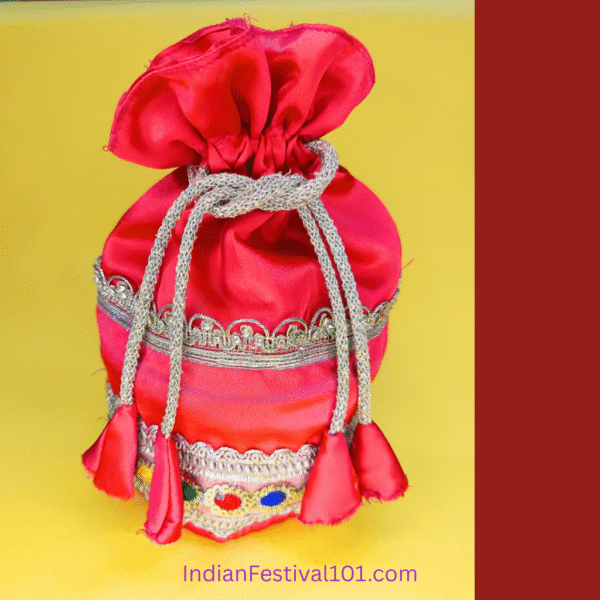Rangoli-A popular art form of floor decoration. Indian women decorate the entrance of the house with Beautiful Rangoli Art. Atithi Devo Bhavah; means our guest is a form of god. To maintain the hospitality of our guests, rangoli is made at the entrance gate. Whether it’s a festival, event or wedding ceremony, making beautiful rangoli art is quite popular in India. Various rangoli-making activities are performed in homes, schools, colleges and offices. In this article, we will explore the art of rangoli design, its historical context, techniques, and how it brings joy and positivity to various festivities. We will also talk about some of the unknown facts about rangoli arts and its popularity in India.
What is Rangoli?
Rangoli is derived from the Sanskrit word “Rangavalli,” which means a row of colours. It involves creating colourful designs on the floor, typically in front of homes, temples, and other important places, as a form of decoration and auspicious symbolism. The rangoli arts are known as Alpana, Saaz, Muggu, Kolam, Zuti, Mandana, and many other names in India.
History of Rangoli
Rangoli has ancient origins, with references found in Indian scriptures and historical texts. Rangoli is an ancient traditional Indian art form that has been passed down through generations. hand made rangoli are a popular tradition from ancient times but nowadays beautiful rangoli are made within a short time
Significance of Rangoli Arts
Rangoli holds significant cultural and spiritual importance.
It is believed to bring good luck, prosperity, and positive energy to the surroundings.
Rangoli plays a significant role in welcoming guests at the front door. During the Diwali festival rangoli is made at every home office and workplace. Making beautiful rangoli by filling different colours. Rangoli-making tools make it easy to make expected beautiful designs.
Rangoli Explore Creativity
Making Rangoli arts is a form of floor decoration. it’s a celebration of creativity, culture, and tradition. As hands skillfully create patterns, they weave stories of joy, unity, and the timeless beauty of India’s artistic heritage.
Rangoli Design Showcase The Rich Diversity of Indian Culture
Rangoli showcases the rich diversity of Indian culture through colour, pattern, and creativity. During festivals and events, different rangoli designs and arts show the cultural diversity of India. Different regions in India have their unique styles and variations of rangoli. Rangoli making is quite popular in South Indian culture and is known as “kolam”. Onam-major festival of Kerala makes flower Rangoli designs on all 10 days to welcome King Mahabali at their door.
Rangoli is sometimes created as an offering to deities during religious ceremonies and rituals. It is believed to invite divine blessings and protect the home from negative energies.
Social Bonds within the Community.
Rangoli art is a form of cultural expression that brings communities together. Creating Rangoli is often a communal activity where family members, neighbours, and friends come together to design and decorate the space. It fosters a sense of togetherness and strengthens social bonds within the community.
Rangoli Designs and Patterns:
Rangoli is a temporary art form as it is created on the ground, and the designs are often destroyed or washed away after a few days. This impermanence symbolizes the transient nature of life.
Rangoli designs can be intricate and complex or simple and geometric, depending on the occasion and the individual’s skill level. They often feature symmetrical and repetitive patterns, flowers, peacocks, religious symbols, and geometric shapes.
Rangoli’s intricate patterns and harmonious colours have influenced various art forms, including textiles, ceramics, and even architecture. The choice of colours is important, with red, yellow, orange, green, and blue being common choices.
Materials Used in Rangoli Making
Rangoli arts can be made of any material and there are no rules for this. Coloured powders, made from natural ingredients, are a cornerstone of rangoli, allowing for striking colour combinations. Rice flour and sand serve as base materials, forming a canvas for the rangoli patterns to come to life. Traditionally, rangoli is made using coloured rice powder, crushed limestone, or flower petals. In modern times, people also use coloured chalk, rangoli stencils, coloured sand, and even flower petals to create these designs. Rangoli-making materials are easily available in different colours.
Handmade rangoli designs always have special significance. Nowadays, stencils are quite popular and easy to make beautiful rangoli art in less time. making stencils has made it easy to make beautiful rangoli in a minute.
Theme-Based Rangoli Arts
Rangoli arts and design can be theme-based. Based on the occasion, the design can vary. Rangoli art at the Welcome door can give a beautiful message. You can give a specific message by making rangoli art. You can write beautiful text with specific messages
Rangoli design themes based on the Hindu deity are quite popular at the entrance. welcome rangoli design, rangoli designs for prosperity. Rangoli arts for weddings, school and college events sports events, Diwali and many special occasions. Rangoli designs of different shapes and sizes are made. Peockok rangoli, swastik rangoli
Rangoli Making at Different Occasions
Rangoli Arts during festivals in India
Rangoli is commonly created during various Indian festivals. Rangoli making during Diwali and Durga puja is also popular in India. Based on the local culture and tradition, rangoli designs and materials used differ but the message remains the same for everyone. It is also made on special occasions like weddings, anniversaries, and religious ceremonies. Rangoli graces weddings and religious ceremonies, symbolizing blessings and welcoming guests.
Rangoli Making Competition
Rangoli-making competition is popular in India. unique themes for the rangoli competition. People participate in rangoli-making competitions and some prize money or gifts are also given to the winner.
The objective of Rangoli competitions is to help students to connect with diverse Indian cultures. It also helps to learn teamwork. Rangoli-making competitions bring creativity to the beautiful rangoli arts.
Hand-made Rangoli making is the best activity to boost the creativity and passion of children in schools. The school organised Rangoli-making competitions every year. During festivals or school functions, rangoli-making activities are quite popular in schools for kids. Student makes beautiful rangoli designs with different rangoli-making materials. Rangoli arts are made at the entrance gate by students to welcome guests.
Buy Rangoli Making Tool Kit Online

Conclusion
Rangoli is a vibrant and culturally rich tradition in India. This beautiful art is frequently made during festivals, events and wedding ceremonies in India and adds beauty to celebrations. It also carries deep symbolic and spiritual significance. It is a testament to the artistic creativity and cultural diversity of the country and continues to be an important part of Indian life and festivals.
FAQs
What is Rangoli?
Rangoli is a traditional Indian art form involving the creation of colourful patterns on the floor using coloured powders, rice flour, or other materials.
Why Rangoli is made?
It is believed to bring good luck, prosperity, and positive energy to the surroundings.
What occasions are suitable for creating rangoli?
Rangoli is commonly created during festivals, weddings, religious ceremonies, and various celebrations.
What materials are used to create rangoli designs?
Rangoli designs are crafted using vibrant coloured powders, rice flour, sand, and sometimes flower petals and leaves.
What is the significance of rangoli in Indian culture?
Rangoli holds cultural and spiritual significance, symbolizing harmony, auspiciousness, and the welcoming of guests.
How has rangoli influenced other art forms?
Rangoli’s patterns and colours have inspired various art forms, including textiles, ceramics, and architectural design.
Also Read:




 Red Satin Potli Bag with Golden Lace
Red Satin Potli Bag with Golden Lace